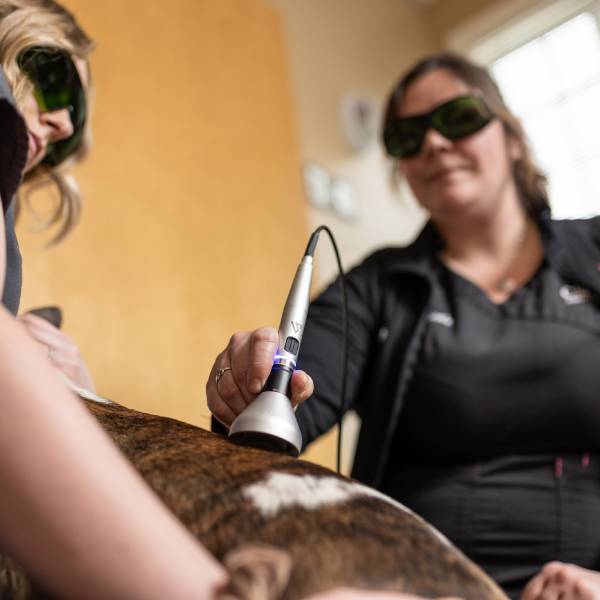Ultrasonography
In veterinary medicine, an ultrasound is used for various diagnostic purposes, including:
- Pregnancy detection and monitoring – Checking if a pet is pregnant and assessing fetal development.
- Examining internal organs – Evaluating the liver, kidneys, bladder, intestines, pancreas, and spleen for abnormalities.
- Heart health assessment (echocardiography) – Checking for heart disease, murmurs, or structural issues.
- Detecting tumors or masses – Identifying abnormal growths or cysts inside the body.
- Guiding procedures – Assisting with biopsies or fluid drainage by providing real-time imaging.
- Evaluating digestive issues – Detecting obstructions, thickening of intestines, or other GI problems.
Ultrasound vs X-Ray
Your pet may need an ultrasound instead of an X-ray because ultrasounds provide more detailed images of soft tissues and organs in real-time that an X-ray can’t provide. Here’s how they compare:
Ultrasound
- Better for soft tissues – Ultrasounds give clearer images of organs like the liver, kidneys, bladder, and heart, while X-rays are better for bones.
- Detects fluid buildup – X-rays can’t easily differentiate between soft tissues and fluids, but ultrasounds can.
- Real-time imaging – It allows vets to see organ movement, like how the heart is beating or how blood is flowing.
- Guides procedures – If your vet needs to take a biopsy or drain fluid, an ultrasound helps them do it accurately.
When Are X-Rays Better
- If the vet needs to examine bones or detect fractures.
- To check for foreign objects (like a swallowed toy or rock).
- To get an overall picture of the chest or abdomen, but not fine details.
Preparing your pet for an ultrasound depends on the type of exam being done, but here are some general guidelines:
Fasting
- In most case, we recommend withholding food for 8–12 hours before the ultrasound, especially for abdominal scans. This helps get clearer images by reducing gas and food in the stomach.
- Water is usually allowed unless instructed otherwise.
Bladder Preparation
- In most cases, your pet will need a full bladder for better imaging.
- Try to prevent them from urinating for a few hours before the appointment.
Shaving May Be Needed
- In most cases, we will need to shave the area being examined to get a clear image.
Keeping Your Pet Calm
- The procedure is painless, but some pets may feel nervous.
- In some cases, mild sedation may be needed if your pet is very anxious or wiggly.
Ultrasound Referral
Ultrasound services at Mount Carmel Hospital are available to new patients in addition to current patients under the care of one of our veterinarians. We respect the relationship that you have with your current veterinary provider and are happy to work with them to get your pet the care they need. A formal referral from your current provider is not needed, but records are. Our office can take care of obtaining your patient’s recent medical history from your current provider, including notes, diagnostic images, and diagnostic lab results. After your pet’s ultrasound visit to our office, we will share your pet’s results to your primary care veterinarian to manage your pet’s care.

